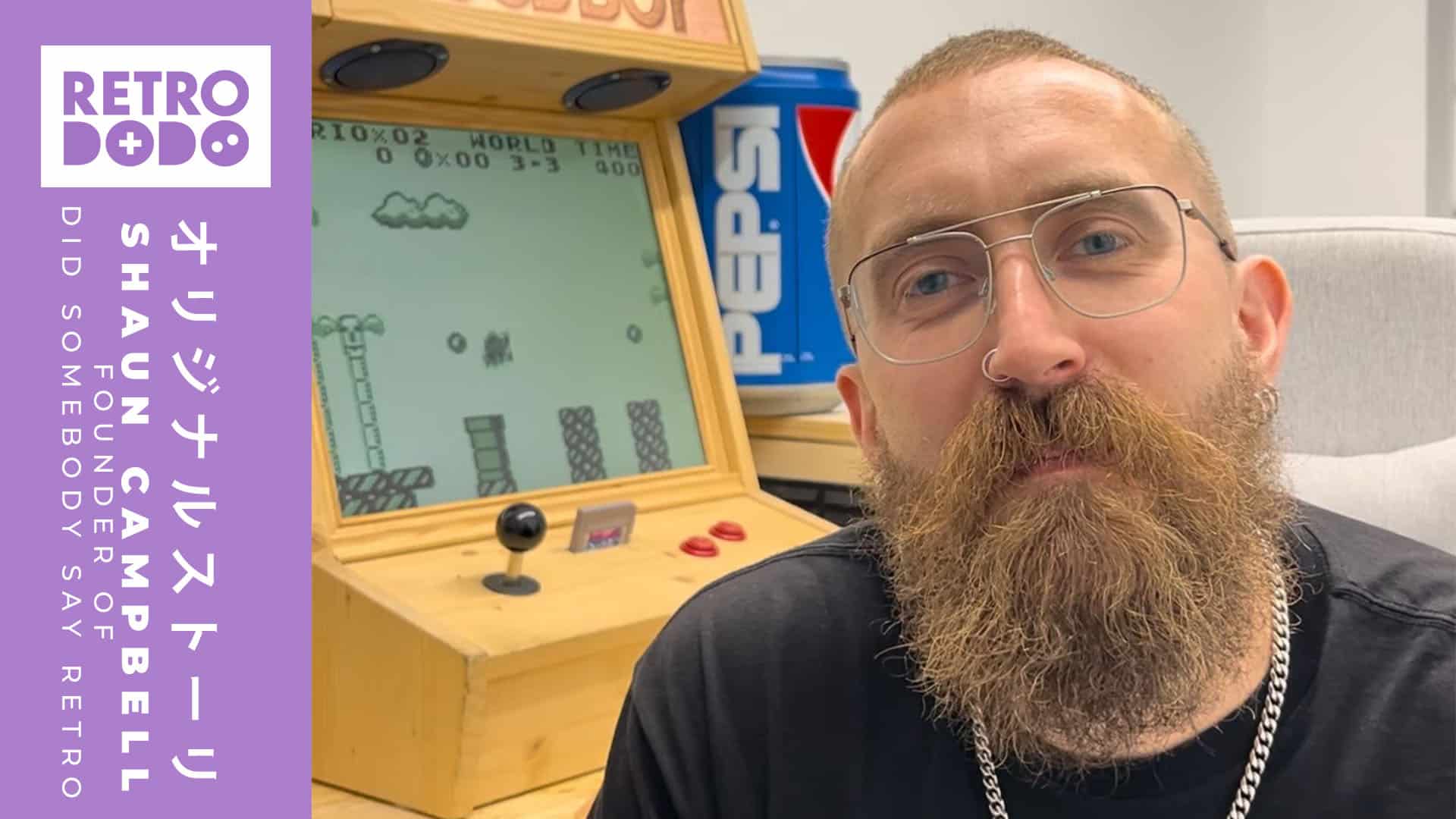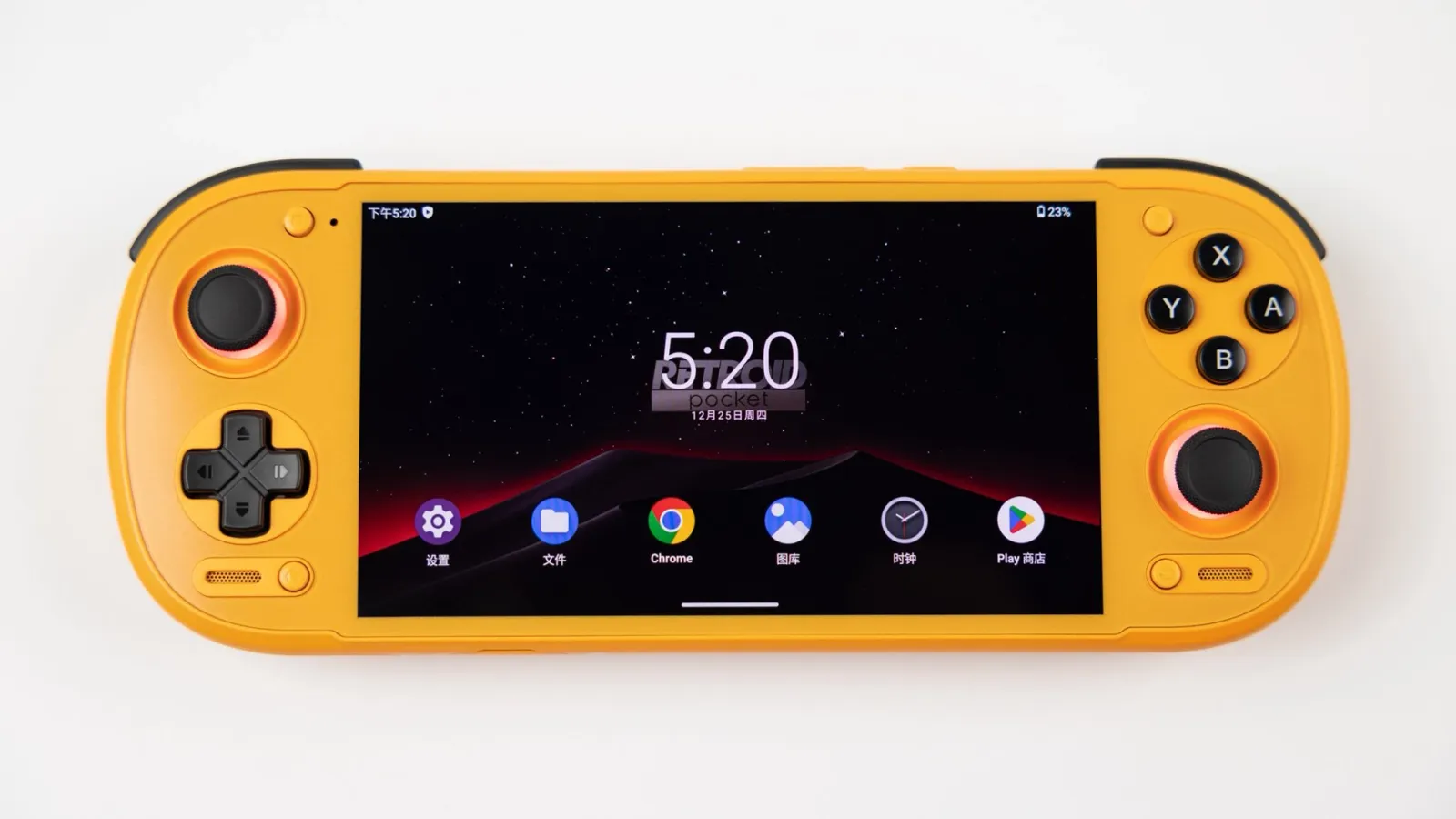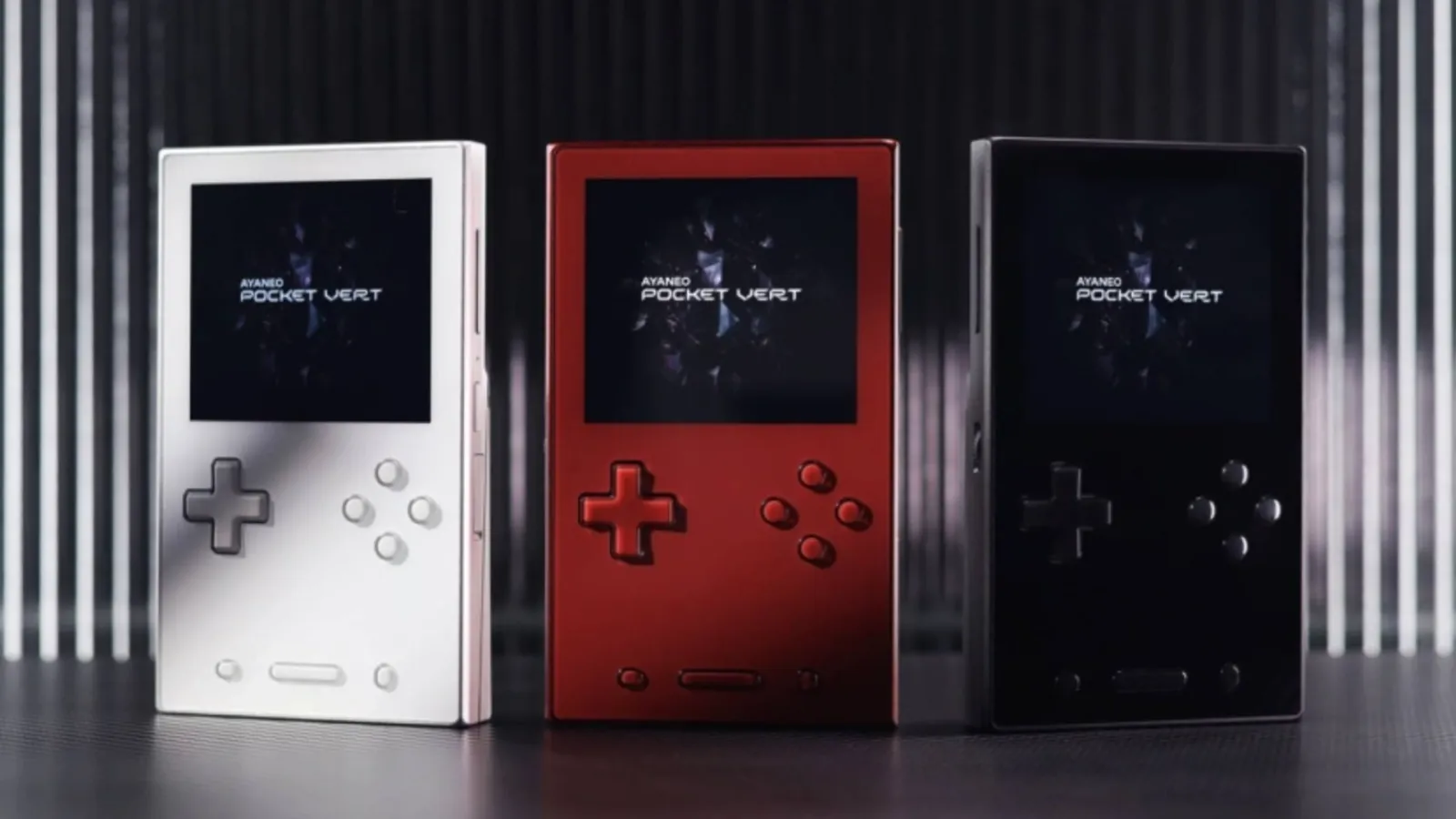Modders, inventors, and creators keep the Retro Gaming world turning. They’re the lifeblood of the scene, using new and ingenious ideas to bring life back to old consoles and games. They create new ways of playing via exciting peripherals using technology that just wasn’t around as we were growing up, and they never fail to concoct new and exciting ideas that manage to capture the feeling of the arcade hall and the misspent hours we all shared playing games as kids.
One of these creators is Shaun Campbell, the face, hands, and mind behind Did Somebody Say Retro? Shaun is a talented craftsman and avid Retro Gamer who has built some incredibly impressive pieces over the years. No doubt you will have seen some of his work on social media, including our own channels, with his own socials attracting retro gamers from across the globe and serving as a central hub for all things crafty and nostalgic.
I had the pleasure of speaking with Shaun and got the chance to pick his brains about creating the WoodBoy and how it all came together, as well as which iconic peripherals Shaun would have made differently had he had the chance.
Getting To Know Shaun Cambell Of Did Somebody Say Retro?
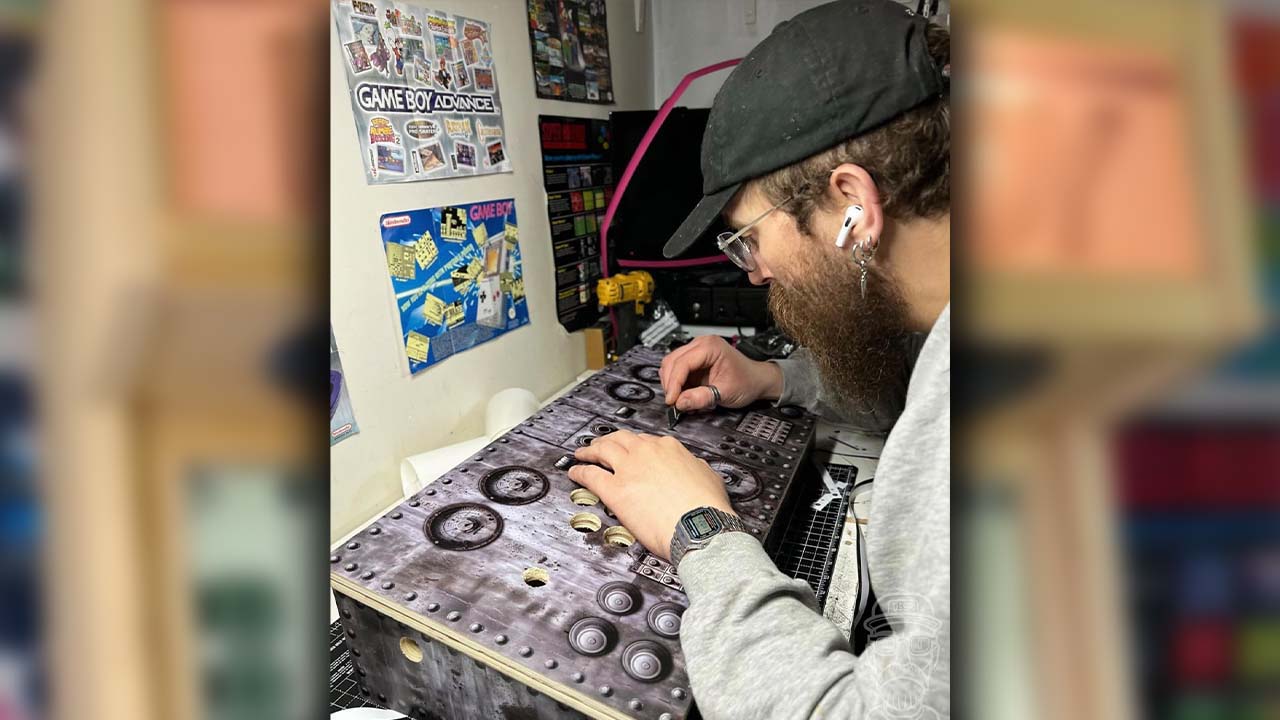
RD: Thanks for joining us for this edition of Let’s Talk Retro Shaun. Why don’t you give me a brief introduction about you and your modding work as an introduction to the community?
Shaun: I create unique retro gaming machines as a hobby, for my Did Somebody Say Retro? customers and also for NQ64. Some examples of my work are the WoodBoy and Wallboy which are machines I have built around a Game Boy, then also some portable console setups that I’ve built like the CaseStation and N-SIXTY-SUITCASE which are complete console setups built inside a suitcase/aircase. But this all stems from my past work on modding Game Boys, giving them new screens, shells, and everything in between.
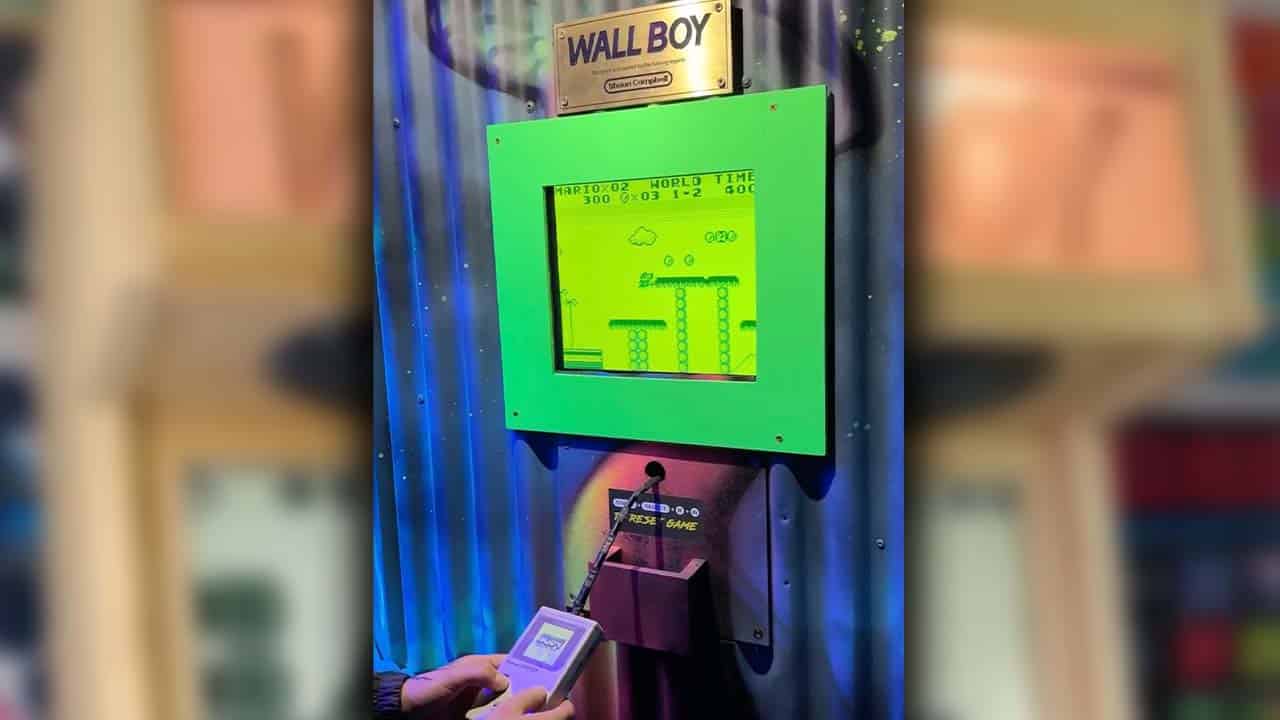
RD: I played on the WallBoy when I visited NQ64 in Manchester with Brandon back in 2023 and people loved it on socials. The WoodBoy feels as though it takes the awesomeness factor one step further – where did the inspiration come from?
Shaun: I’m a trained Carpenter and worked in the trade for many years, so I’ve always wanted to combine this skill set with what I have learned over the years in the retro gaming industry. Being a huge fan of the Game Boy, I really wanted to celebrate it in a new way. I decided that turning it into an arcade machine would provide a whole new gaming experience, so I gave myself the challenge of making it by hand, out of pine, and with no artwork, so there was very little room for error!
RD: So how does the WallBoy work, can you give us any insight into the building process?
Shaun: So inside that WallBoy pad, that Game Boy that you’re holding to control it with, there’s a NES pad in there. So everything’s all connected to a NES pad in there, and then that is the wire and the chain and goes into behind the wall.
RD: That’s awesome. Playing it in the flesh felt like when you go into the video game stores back in the 90s and 2000s, when you can test like GameCube games or N64 games, but you can actually feel the controller and it’s attached to something. It felt a bit like that.
Shaun: That’s cool! That’s a nice bit of feedback because that’s one of the angles I tried to go off. So like the Xbox kiosks and the GameCube kiosks, sometimes in a big plastic sphere maybe, so it protects people from messing with the screen. But you’ve seen pictures before where people are playing like N64 and the screens up there on a CRT. That’s the kind of thing. It’s like a kiosk essentially.
The All-important Introduction To Modding
RD: Let’s take it back a little before we go any further. What got you into Modding in the first place?
Shaun: That would have been many years ago. I started in somebody say Retro seven years ago. So it would have been around that time. I’d say 2017, and the first thing I did was I tried to, the first thing I did was I tried to, this is when I was a kid, I think though, I tried to replace the Game Boy Color screen because the plastic lens was like scratched to death.
Shaun: I wanted to put a glass one in and I did it because… I was really worried that I’d affect–and I don’t recommend anybody do this by the way, I was a kid–I really wanted to change the screen. I thought if I open it, it’s going to break so I’m never going to open it. So I got a knife, jammed it in the corner, prized it out and I put a glass one in and there’s still a cut mark on the color to this day. I slipped and sliced the shell a little bit. But yeah, I didn’t do that again.
Introducing The WoodBoy
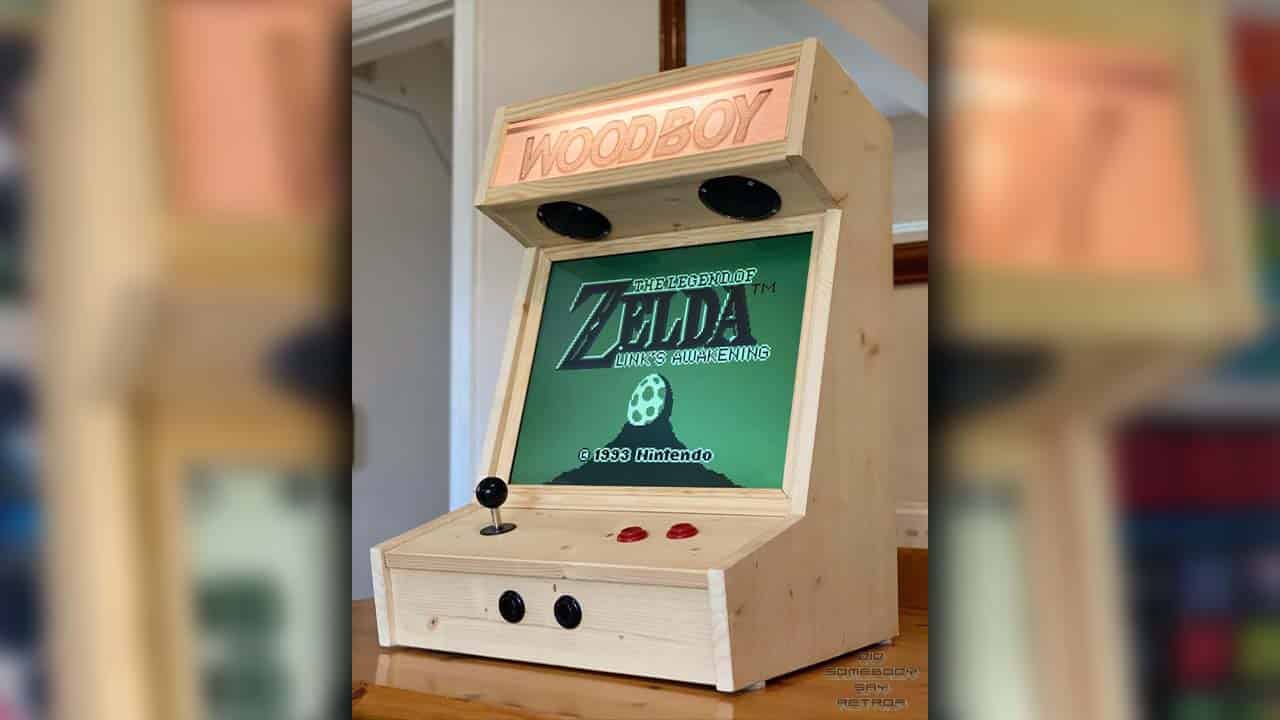
RD: The WoodBoy is an astounding piece of work and it’s instantly apparent that you’re a master at your craft. What are the dimensions of this pine marvel, and how long has it taken you to put it together?
Shaun: I don’t have the weight for it unfortunately, but the dimensions are (W) 450mm / (H) 650mm / (D) 400mm and I’d say I could build one comfortably in the week, but over a good 3 to 4 days if I was left to my own devices!
RD: I’m intrigued as to how you set about a task like this. I’m creatively minded with the written word but I only think in terms of planning out an article or the chapter structure for a book. Did you spend a long time preparing for a project like this, or did you just get stuck in?
Shaun: To be honest I just grabbed a big piece of card out of the recycling at home, laid a 4:3 monitor down on its side, and then just drew a profile around that and used that to start building the prototype. Once the prototype was built I could see what needed tweaking for the final product. I wanted to make sure that the WoodBoy was as slim as it could be, so although there was the challenge of everything being a tight fit, you get the benefit of having a minimal border around the screen, and it’s easy to pick up and transport when needed.
Let’s Talk Cartridges
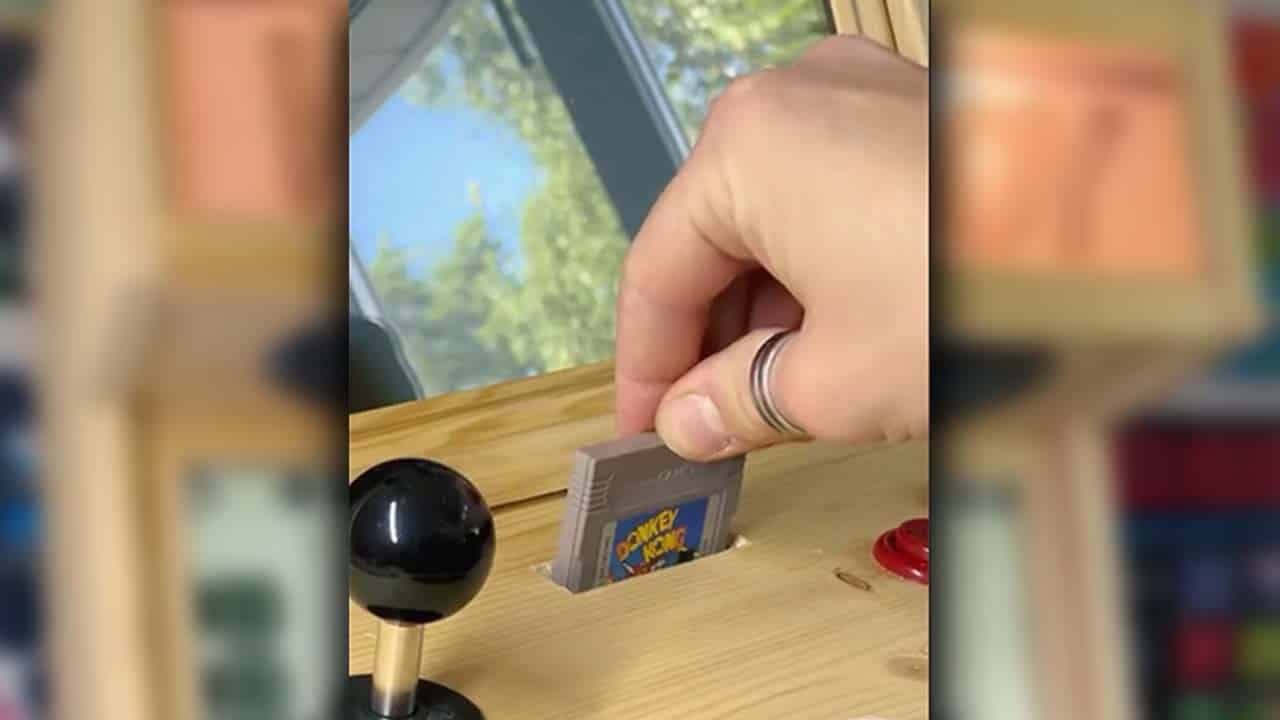
RD: One thing that people who follow you on Instagram will no doubt have seen, and the piece de resistance of the WoodBoy, is that it plays actual Game Boy cartridges. It’s a seriously nice touch – how hard was it to implement it into the design?
Shaun: This is all thanks to the GBHD and DMTV Consolizer by GameBox.Systems. This wonderful bit of kit allows you to turn an original GameBoy motherboard into a mini console, controlled by a SNES or NES pad and outputting VGA or HDMI. With it playing original cartridges, that’s already taken care of in the consolizer, but the addition of the external cartridge reader was the latest modification I did to it which although there was a lot of wiring to do, it was relatively easy to fit. The brains behind the consolizer is Aaron, who unfortunately passed away last year. I had the pleasure of meeting him in person when he visited the U.K. and I got to show him the WoodBoy and WallBoy projects which both use the consolizer. He was a really special guy and a big loss to the retro gaming community – Thanks for everything mate.
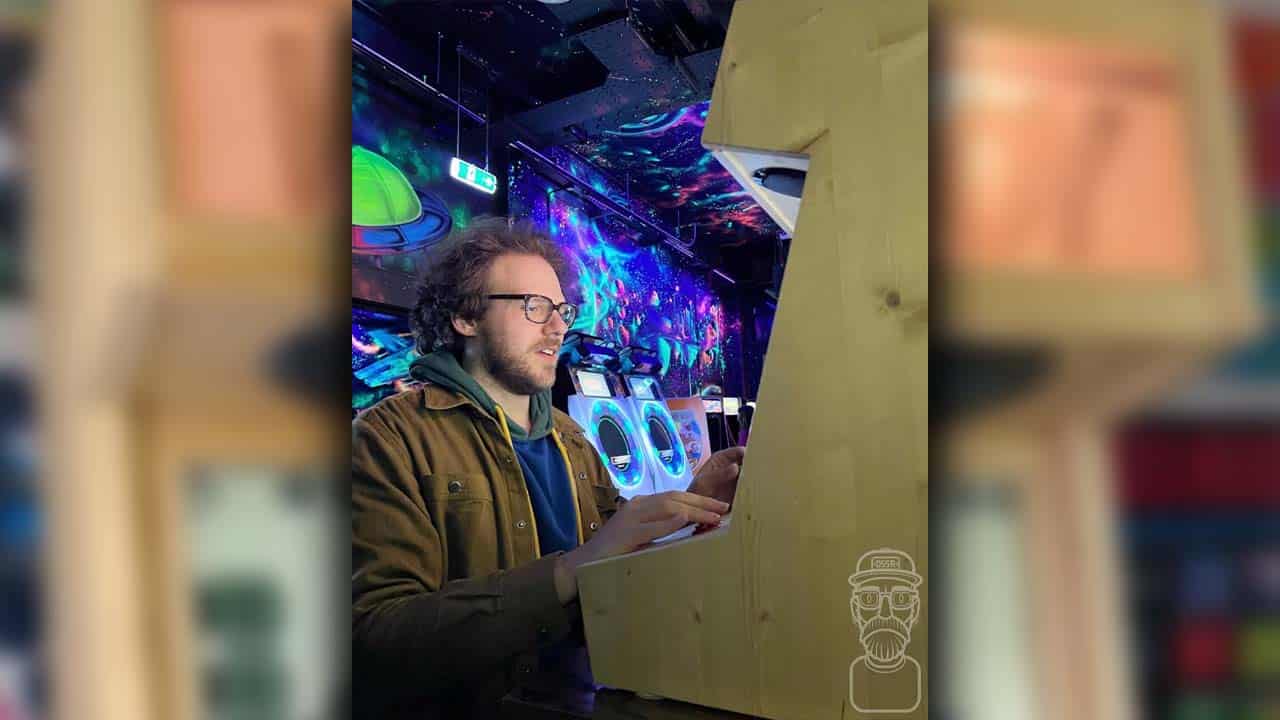
RD: It’s a great loss, but it’s nice that his work can live on for so many people to enjoy in projects like yours. Apart from the consolizer, tell us about some of the components inside the unit itself. For the non-technically-minded amongst us (myself included), how difficult was it to piece everything together, and how did you find creating the arcade unit from wood?
Shaun: So at the heart of it is the consolizer, it outputs a video signal to the monitor, and the audio goes through an amplifier and then into a couple of speakers located behind the marquee lamp. The consolizer is controlled by a SNES pad, so I opened up the pad and wired microswitches to the relevant traces on the control pad’s circuit board, allowing me to connect an arcade joystick and buttons to it. There were definitely challenges using pine which is a softwood. I decided not to use T-Molding as I feel adding plastic would take away from the aesthetic I was going for so I needed to get my edges chamfered accurately. I also wanted to use no artwork and no wood filler on the outside, so I fixed it all together using carefully positioned brackets, all from the inside.
RD: And were there many prototypes?
Shaun: Just the 1 prototype was built, and that was out of some scrap chipboard I had in the garage!
A Viral Sensation
RD: Talk about nailing it first time huh – that’s impressive! We love the WoodBoy, but how has the public received your creation? Are there any plans to see these up and down the country coming up soon?
Shaun: When I first built it 2 and a half years ago, it did quite well in relation to the size of my account at that time, but it didn’t go viral. I uploaded a video of it this year as a Throwback Thursday post and it just took off, it really took me by surprise actually. Because of its newfound interest, I decided to make some new content on it, and then took on some follower requests for an external cartridge reader. That video is now on 6.5 million views, with the next WoodBoy video after that now my biggest ever post at 10 million, which is crazy man! It’s very heartwarming to see something you’ve worked hard on get that much love; it’s really cool and I’m so grateful to every single person for the likes, comments, shares, and messages. And I’d love to make more, but with the announcement of baby number 2, I’m going to have to put that on hold for a bit!
Projects & Peripherals

RD: Have you got any ideas coming up from the community about what you’re going to mod next? I think we saw something recently about you getting an old, was it like an old Coca-Cola peripheral of some sort that you’re going to try and turn into something?
Shaun: Yeah. So that is an old Pepsi can. I don’t know how old it is.
RD: I knew it would be Pepsi or Coke. It was 50-50, man.
Shaun: No, Coke did one. Coke did a massive one. It was huge; I remember it myself. A few people have mentioned it and they’ve said Coke, so it’s okay. I’ll forgive you. It’s about a foot tall. My friend said he’d love to sell it to me and to give me a really good price. He was really excited to hear what I could do with it.
Shaun: Then I put that on the Internet and heard what people had to say. Some people wanted a Bluetooth speaker, some people wanted some other stuff. But through what my feelings are, from some of the suggestions online, I’m going to build a little machine or a games console. Kind of thing, really, with wireless pads and stuff. A little screen in there, hopefully build it so it’s all battery-powered, so there’s no mains connection or anything. You can take it around. You could sit on the train, put it down, open the doors, screen, two mini wireless pads, and you just play whatever you like on there.
Shaun: That’s the idea with that. Then anything else that people suggested. A lot of people have requested for WoodBoy Advance. That’s one that I can do. That’s one that’s in the back of my mind, always. That’s the next project I want to do.
RD: For people who are new to your work, what are three other projects that you’re proud of that you’ve worked on over the years?
Shaun: If I had to pick three, I would say the WoodBoy Color XL, the CaseStation, and the WallBoy that you played on in Manchester.
RD: I want to talk about the CaseStation because I fell in love with it. What happened there? Tell us about it.
Shaun: I’m glad you like it! So if anybody hasn’t seen it yet, imagine a flight case, and instead of opening it up and it’s just stuff that you put in there, you open it up and on the top lid… it’s a monitor with built-in speakers, and at the bottom, it’s custom foam that’s got a PS1 embedded in it with four controllers. It’s all connected to a multi-tap. It’s all connected to the PS1. You can’t see any of the cables. It’s all tucked away neatly. You just put one kettle lead in the back of it, like you do on a PC tower. You just put one of those cables in, and everything just comes on.
Shaun: I did one before that called, it’s basically, I call it the N60 Suitcase. It’s an N64 in a vintage suitcase. So that was the first.
RD: Now we’re talking!
Shaun: That was the first edition. Then the CaseStation was like a step up from that really, because that was the first one and then this was like, okay, so how can I make it better? What things about that could be made better?
RD: Let’s wrap things up by posing a tricky question to you – If you had to pick three pieces of gaming tech you wish you had made because you could have improved them, what would they be?
Shaun: The first would have been an official transparent PSP. Give me any cartridge-based console and I’d have clear instructions inside with a little bottle of isopropyl and cotton buds so you can clean the cartridge pins properly! And last of all, the OG GameBoys would have at the minimum an official front-lit screen like the GameBoy Advance SP, ideally backlit though if I would have had my way!
Thanks very much to Shaun for taking the time to chat with me for this edition of Let’s Talk Retro. If you’re feeling in a crafty mood after reading all about Shaun’s creations, then take a listen to Episode 072 of the Retrospect Podcast where we talk to Shaun about building everything from the Casestation to the WoodBoy Color and beyond!


